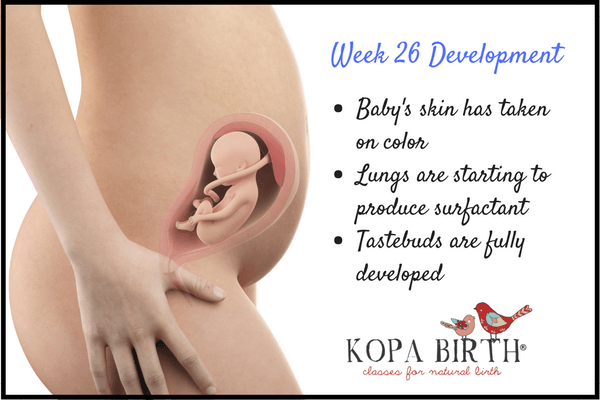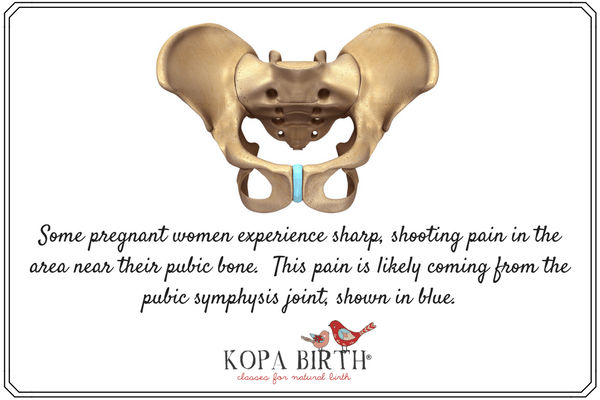
You’re now at 26 weeks of your pregnancy — 24 weeks from conception. Let’s talk about your baby’s development and the pregnancy symptoms that you might experience this week.
Estimated reading time: 4 minutes
At week 26, your little one weighs almost 2 pounds and is measuring around 14 inches in length from crown to heel (1, 4). That puts your baby at approximately the same length as a head of kale.

In case you hadn’t noticed, your belly is continuing to grow too! Your uterus is now about 2 1/2 inches above your belly button. The fundal measurement is approximately 10 1/2 inches from your pubic symphysis to your naval. And, you’ve probably gained between 15 and 22 pounds (1).

Your little one has made some exciting developmental changes this week!

Dreams occur during REM sleep. Due to an increase in progesterone, pregnant women experience less REM sleep than before. Yet, many women describe having more frequent, intense dreams during their pregnancy. Why does this happen?
Most researchers agree that dreams are your subconscious mind’s way of working through your feelings. Dreams may be your mind’s way of coping with the unique stress and significant change that accompany pregnancy. This can result in more vivid, emotional dreams.
Dream recall increases in the later stages of pregnancy due to more frequent waking. If you wake up to use the bathroom while a dream is fresh in your mind, you’re more likely to remember it (1). So, it’s likely that you’re not actually dreaming more now than before your pregnancy. You’re just better able to remember your dreams.
Some women describe feeling sharp, shooting pain in the area near their pubic bone during pregnancy. The pain tends to increase with walking, climbing stairs, or any other activity that causes you to lift up one leg at a time (3).
This pain is likely coming from the pubic symphysis — a joint that connects the right and left halves of your pelvis. This joint becomes more mobile during pregnancy due to an increase of relaxin–a hormone that loosens up the joints to prepare for delivery.
To find some relief, try to avoid long periods of standing and move both legs together as a unit whenever possible. Consider wearing a pregnancy pelvic support belt during the day and take pressure off the pubic symphysis joint at night by sleeping with a pillow between your legs. A physical therapist can also instruct you on specific stretches that can strengthen your hips, quads, and glutes, which can in turn help relieve some discomfort.

Join us again next week to learn about your pregnancy in week 27!
Kopa Birth’s online birthing classes allow you to prepare for natural childbirth in the comfort of your own home, 24/7. Enroll today in our free online childbirth class to learn more about preparing for natural childbirth.
You’re now at 26 weeks of your pregnancy — 24 weeks from conception. Let’s talk about your baby’s development and the pregnancy symptoms that you might experience this week. Week